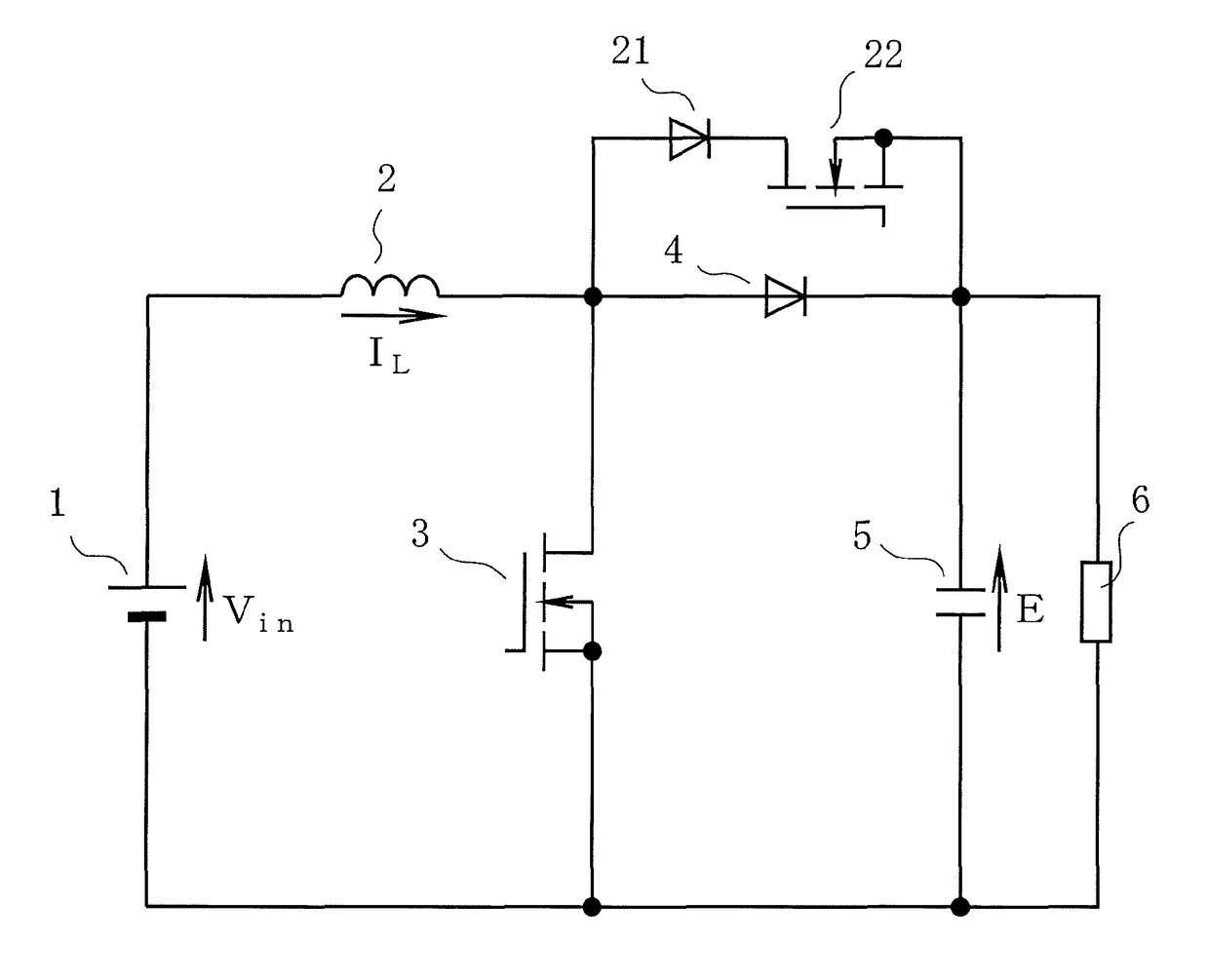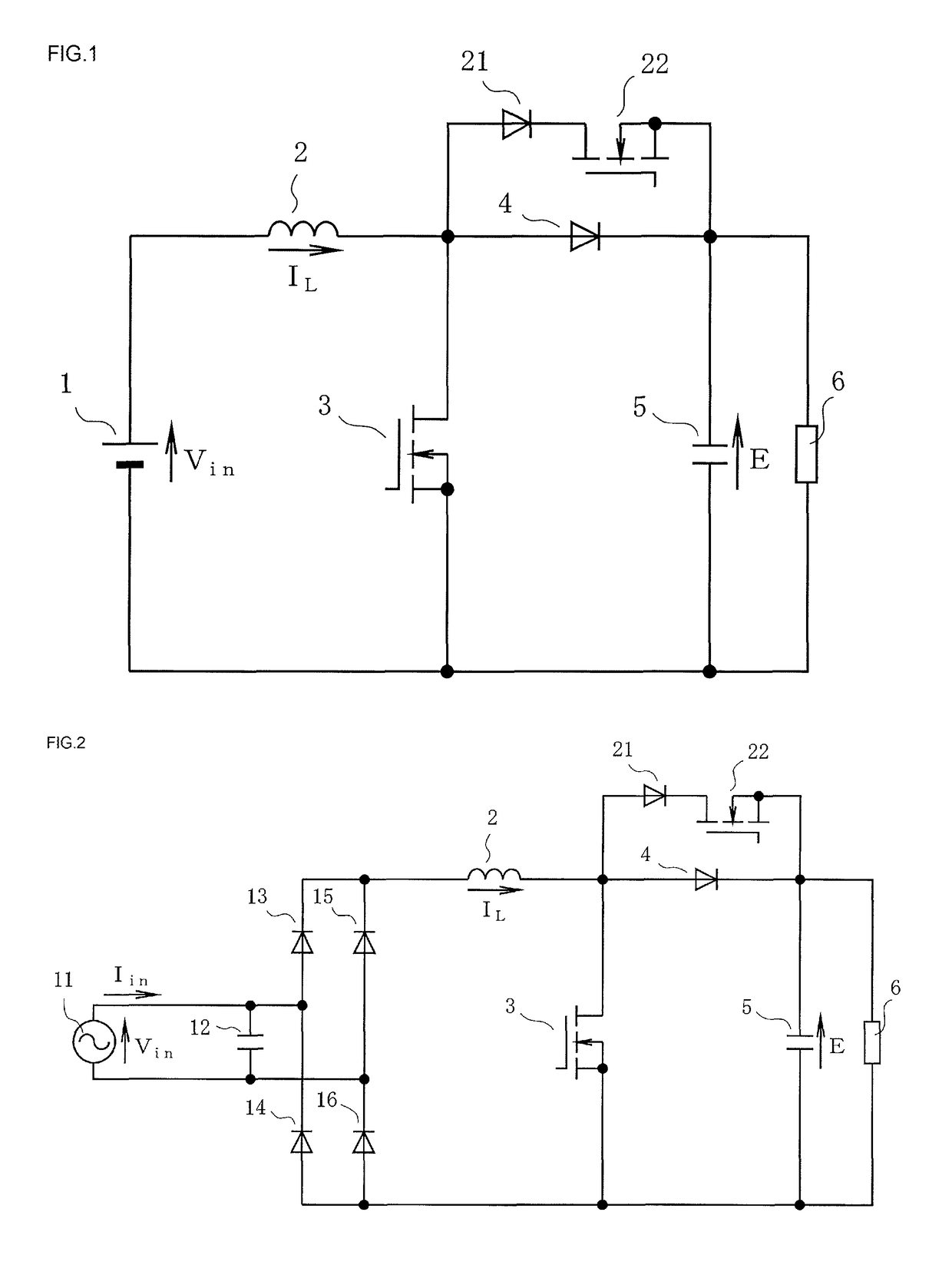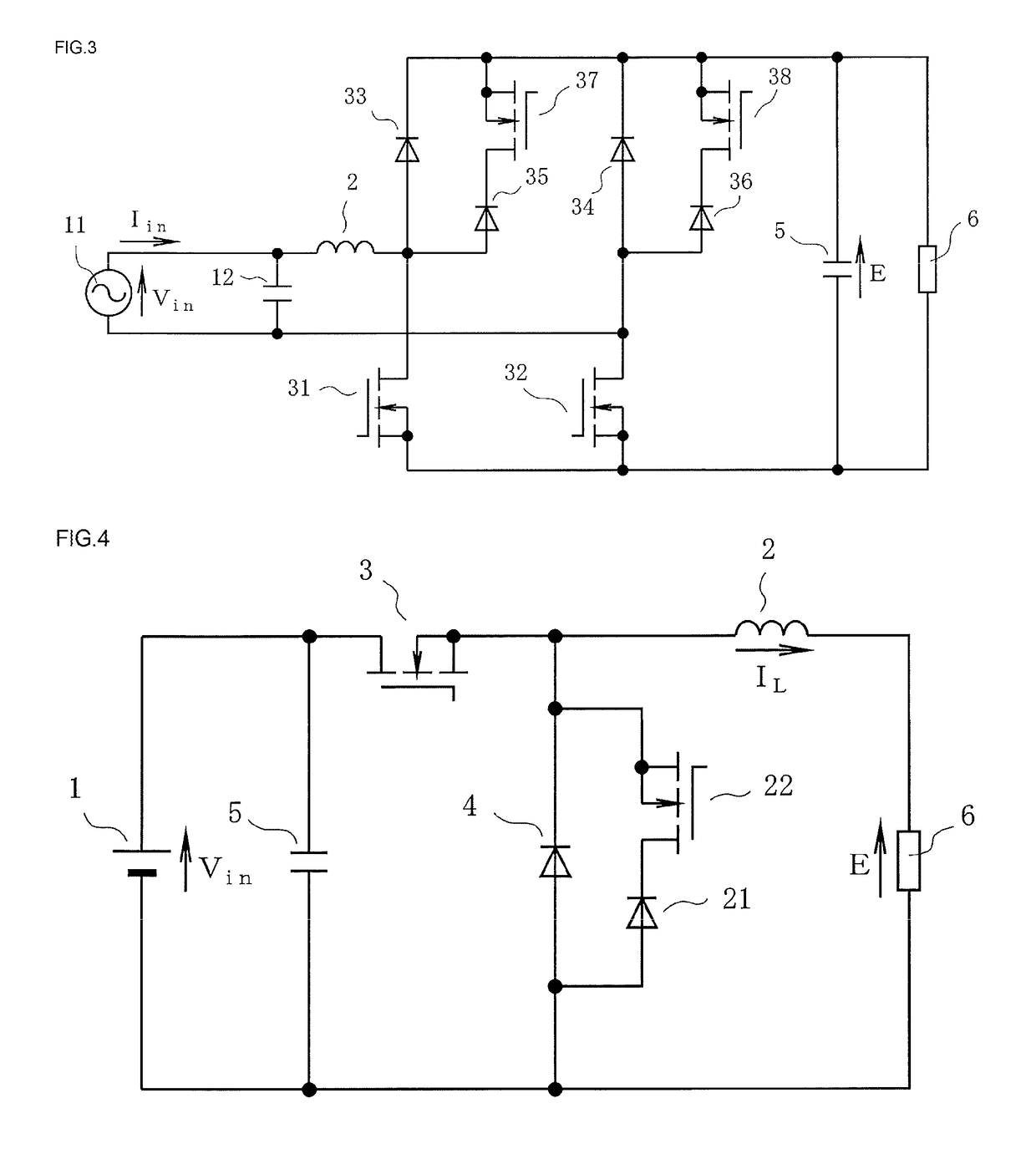Power converting device
a power conversion device and power technology, applied in the direction of electric variable regulation, process and machine control, instruments, etc., can solve the problems of increasing device cost, increasing device cost, and large reverse recovery loss, and achieve small reverse recovery loss, low forward voltage drop, and small conduction loss
- Summary
- Abstract
- Description
- Claims
- Application Information
AI Technical Summary
Benefits of technology
Problems solved by technology
Method used
Image
Examples
first embodiment
[0047]FIG. 1 is a circuit diagram showing the disclosure. Although one portion of the circuit of FIG. 1 is the same as FIG. 6, an overall configuration of the circuit of FIG. 1 will be described hereafter in order to clarify the embodiment.
[0048]In FIG. 1, a inductor 2, diode 4, and capacitor 5 are connected in series to both ends of a direct current power supply 1, and a load 6 is connected in parallel with the capacitor 5. Also, a first semiconductor switching device 3 is connected between an anode of the diode 4 and a negative electrode of the direct current power supply 1. Furthermore, a series circuit of a rectifying diode 21 and second semiconductor switching device 22 is connected in parallel with the diode 4.
[0049]Herein, MOSFETs are used as the semiconductor switching devices (hereafter referred to simply as switching devices) 3 and 22. Also, the diode 4 is, for example, a fast recovery diode.
[0050]A basic operation of this circuit is the same as that of the previously desc...
second embodiment
[0061]Next, FIG. 2 is a circuit diagram showing the disclosure.
[0062]The second embodiment is an example wherein a rectifying power supply is used in place of the direct current power supply 1 of FIG. 1, and the rectifying power supply is configured of a bridge rectifier circuit formed of an alternating current power supply 11 and rectifying diodes 13 to 16, in the same way as in FIG. 7. 12 is a filtering capacitor.
[0063]This circuit is well-known as a PFC (power factor correction) circuit, and by utilizing the characteristic of the current IL being arbitrarily controllable, as previously described, the voltage E can be kept at a desired value while arranging that the input current Iin is a sine wave in phase with the input voltage Vin.
[0064]As operations of the diodes 4 and 21 and switching device 22 are the same as in the first embodiment, a description thereof will be omitted.
[0065]The circuit of FIG. 2 is such that when recovering from a momentary voltage drop of the alternating...
third embodiment
[0070]Next, FIG. 3 is a circuit diagram showing the disclosure. This embodiment is an example wherein the disclosure is applied to a so-called bridgeless PFC circuit that does not need a bridge rectifier circuit.
[0071]In FIG. 3, the capacitor 12 is connected to both ends of the direct current power supply 11, and one end of the capacitor 12 is connected via the inductor 2 to a series connection point of a diode (fast recovery diode) 33 and switching device 31. A series circuit of a diode (fast recovery diode) 34 and switching device 32, the capacitor 5, and the load 6 are connected in parallel to the series circuit of the diode 33 and switching device 31.
[0072]Herein, the switching devices 31 and 32 correspond to a first semiconductor switching device in the claims.
[0073]Also, a series circuit of a switching device 37 and rectifying diode 35 is connected in parallel with the diode 33, and a series circuit of a switching device 38 and rectifying diode 36 is connected in parallel with...
PUM
 Login to View More
Login to View More Abstract
Description
Claims
Application Information
 Login to View More
Login to View More - R&D
- Intellectual Property
- Life Sciences
- Materials
- Tech Scout
- Unparalleled Data Quality
- Higher Quality Content
- 60% Fewer Hallucinations
Browse by: Latest US Patents, China's latest patents, Technical Efficacy Thesaurus, Application Domain, Technology Topic, Popular Technical Reports.
© 2025 PatSnap. All rights reserved.Legal|Privacy policy|Modern Slavery Act Transparency Statement|Sitemap|About US| Contact US: help@patsnap.com



